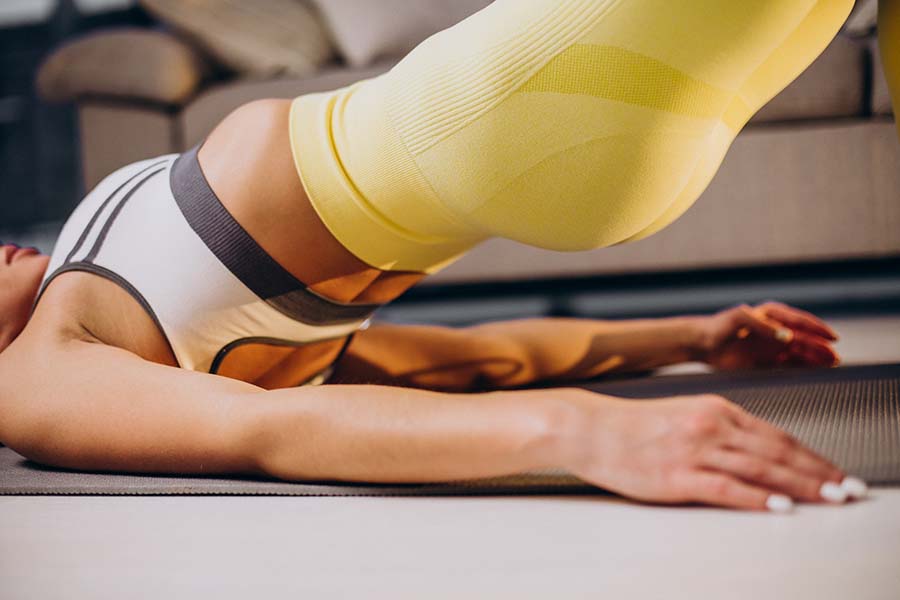Noticing indentations along your hips or outer thighs can be frustrating, especially when you're doing everything to stay in shape. These "butt dents," or hip dips, often make people feel self-conscious in fitted clothes or swimwear.
You’re not alone if you’ve tried squats, lunges, or glute workouts without seeing much change. The truth is, butt dents are influenced by bone structure, not just body fat or muscle.
Still, there are ways to reduce their visibility and improve overall glute shape with a smart, consistent approach.
This blog will guide you through five proven tips and targeted workouts to help address butt dents naturally, so you can feel more confident and comfortable in your body.
For added resistance and faster results, try incorporating the Adjustable Dumbbell Weights into your lower body exercises like squats and lunges.
What Causes Butt Dents?
Butt dents, also known as hip dips, result from the natural structure of your hips and surrounding muscles. Understanding the key causes can help you address them more effectively through training and lifestyle changes.
Bone Structure and Genetics
Butt dents are primarily influenced by your bone structure and genetic makeup. The width of your hips and how your thigh muscles attach to the pelvis largely determine the depth and appearance of these indentations.
Body Fat Distribution
How your body stores fat also affects butt dents. People with higher fat distribution around the hips may see smoother contours, while those with less body fat may have more visible dips due to reduced soft tissue coverage.
Weak Glute Muscles
Underdeveloped glute muscles can lead to sagging in the hip area, making dents more noticeable. Strengthening the glutes helps support the surrounding tissue and can reduce the visual dip.
Poor Posture Habits
Poor posture can cause skin and tissue to fold awkwardly around the hips. Over time, this may exaggerate the appearance of butt dents.
Aging and Skin Elasticity
As we age, skin loses its firmness and elasticity, which can further highlight the contours and dips in the hip area. While natural, this process can make butt dents more pronounced.
Although butt dents are a normal part of many body types, targeted muscle work and posture corrections can help reduce their appearance if they make you feel self-conscious.
Tips to Get Rid of Butt Dents
While butt dents are completely normal and nothing to be ashamed of, it's understandable if you feel self-conscious and want to minimize their appearance. The following tips focus on improving posture, muscle engagement, and mobility to help reduce visible indentations over time.
1. Practice Good Posture
Poor posture can cause the skin and tissue around your hips to fold, deepening the appearance of butt dents. Focus on standing tall with your shoulders back, chest open, and hips aligned over your ankles to create better support for your lower body.
2. Use a Foam Roller
Rolling out the sides of your hips using a foam roller can help release muscle tension and improve tissue mobility. Lie on your side with the roller under your hip, then slowly roll up and down the side of your hip and thigh. Repeat on both sides for best results.
Try Glute Strengthening Exercises
3. Strengthening your gluteal muscles can help lift and shape the hip area, reducing the visibility of butt dents. Effective exercises include squats, lunges, glute bridges, deadlifts, and step-ups. These movements target key muscles and will be explored in more detail in the next section.
4. Maintain a Healthy Diet and Hydration
Following a healthy diet and staying hydrated support skin elasticity and muscle recovery. Focus on nutrient-dense foods like fruits, vegetables, lean proteins, and healthy fats, and aim to drink sufficient water daily to promote overall body composition.
5. Consider Cosmetic Procedures
If natural methods aren’t providing the results you desire, cosmetic procedures such as fat grafting or dermal fillers may help fill out hip dips. Always consult a qualified medical professional and carefully weigh the risks and benefits before considering any intervention.
Incorporating these tips into your routine can help minimize the appearance of butt dents and enhance your confidence in your body's natural shape.
Exercises to Get Rid of Butt Dents
Here are some exercises that can help strengthen the gluteal muscles and reduce the appearance of butt dents:
1. Squats
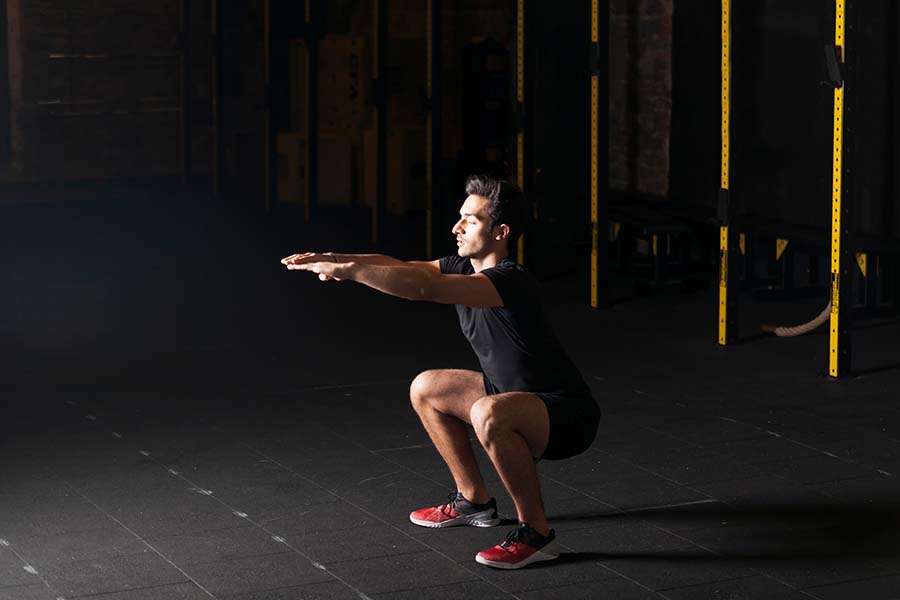
Squats are a fundamental lower-body movement that targets the glutes, quadriceps, hamstrings, and stabilizing muscles around the hips. This compound exercise is one of the most effective ways to build muscle mass in the glutes, which helps reduce the appearance of butt dents.
For individuals looking to smooth out hip dips, squats help engage both the gluteus maximus and gluteus medius. These muscles are essential for creating fuller, more balanced curves along the sides of the hips.
How to Perform Squats
- Stand with feet shoulder-width apart, toes slightly outward.
- Hold a dumbbell or position a barbell across your upper back.
- Keep your chest up and core tight.
- Bend your knees and lower until thighs are parallel to the floor.
- Push through your heels to return to standing.
- Perform 3 sets of 10–12 reps.
Related Article: 15 Common Squat Form Mistakes You Need to Avoid
2. Lunges
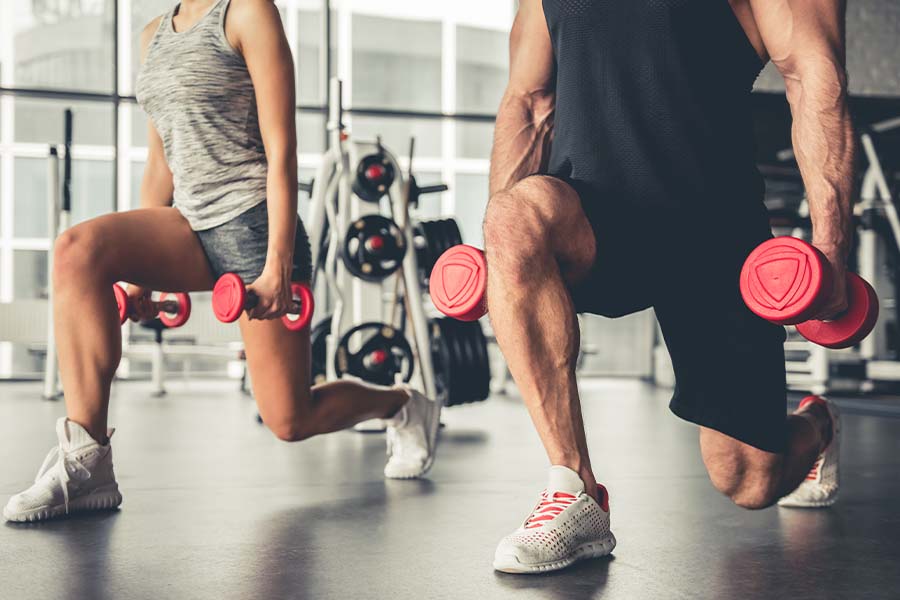
Lunges are a powerful lower-body movement that builds strength in the glutes, hamstrings, and quads. Because they isolate one leg at a time, lunges help correct muscle imbalances and activate the stabilizing muscles around your hips.
This makes them especially useful for reducing the appearance of butt dents by targeting each side of the glutes individually. When performed regularly and with proper form, lunges can help lift and shape your hips while also improving balance and posture.
How to Perform Lunges
- Stand with feet hip-width apart.
- Step forward with one leg and bend both knees.
- Lower until the front knee forms a 90-degree angle.
- Push through your front heel to return to standing.
- Repeat on the opposite side.
- Perform 3 sets of 10–12 reps per leg.
3. Glute Bridges
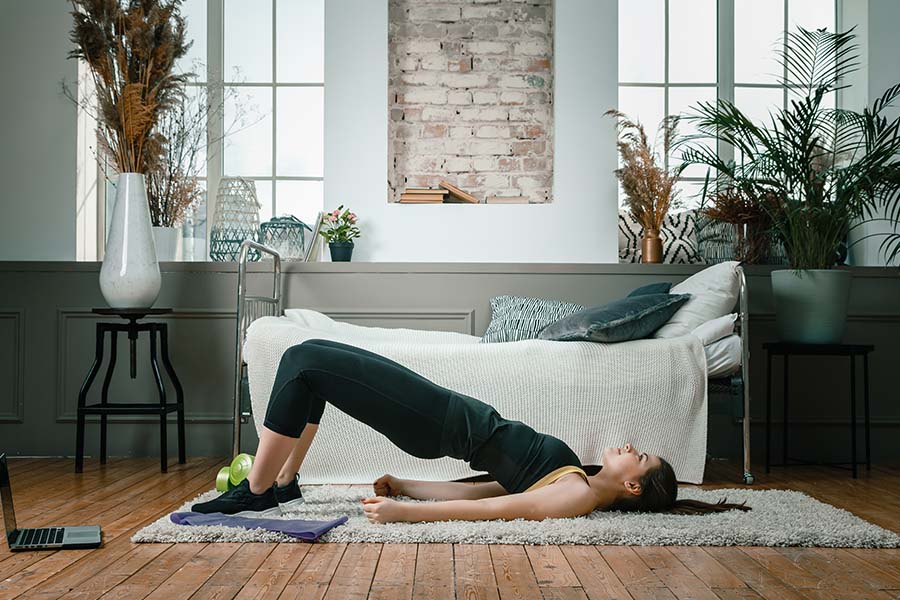
Glute bridges are an effective isolation exercise that specifically targets the gluteus maximus. They help build strength and volume in the lower glutes, which contributes to a rounder and more defined appearance around the hips.
This exercise is particularly beneficial for addressing butt dents because it focuses on lifting and tightening the muscle area that supports the outer hip. It’s also beginner-friendly and can be performed with or without added resistance like a dumbbell or resistance band.
How to Perform Glute Bridges
- Lie on your back with knees bent and feet flat on the floor.
- Keep arms at your sides with palms facing down.
- Lift your hips while squeezing your glutes at the top.
- Hold the position for 1–2 seconds, then lower back down.
- Avoid arching your lower back during the lift.
- Perform 3 sets of 15–20 reps.
4. Deadlifts
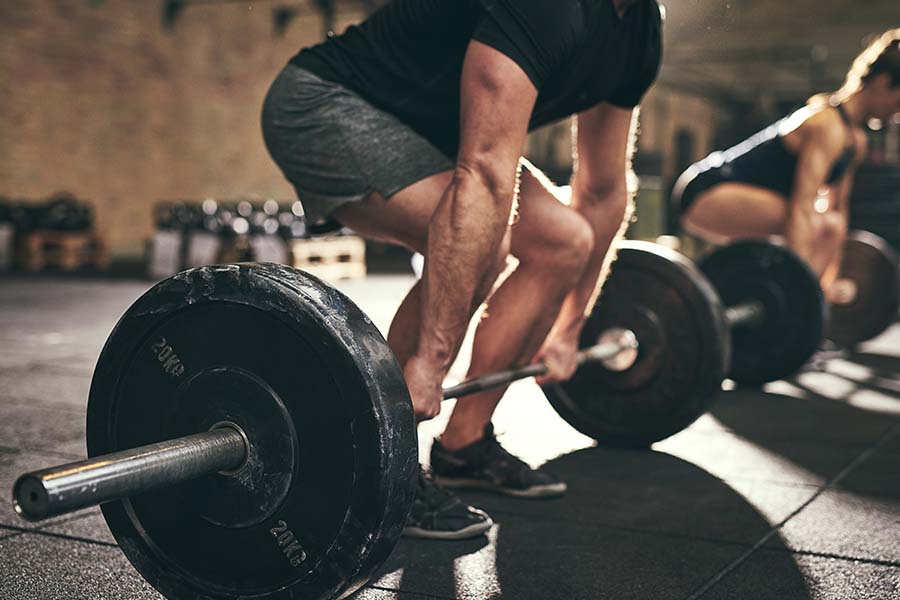
Deadlifts are a powerful compound exercise that works the glutes, hamstrings, and lower back simultaneously. By engaging multiple muscle groups, deadlifts contribute to overall lower-body strength and development.
This exercise is especially effective for building volume in the glutes and reducing the appearance of butt dents. It also supports better hip alignment and posture, both of which are key for reshaping the outer hip area.
How to Perform Deadlifts
- Stand with feet shoulder-width apart and a dumbbell or barbell in front of you.
- Keep your back straight and core tight throughout the movement.
- Hinge at the hips and lower the weight toward the floor.
- Pause briefly, then push through your heels to return to standing.
- Squeeze your glutes at the top before repeating.
- Perform 3 sets of 10–12 reps.
5. Step-Ups
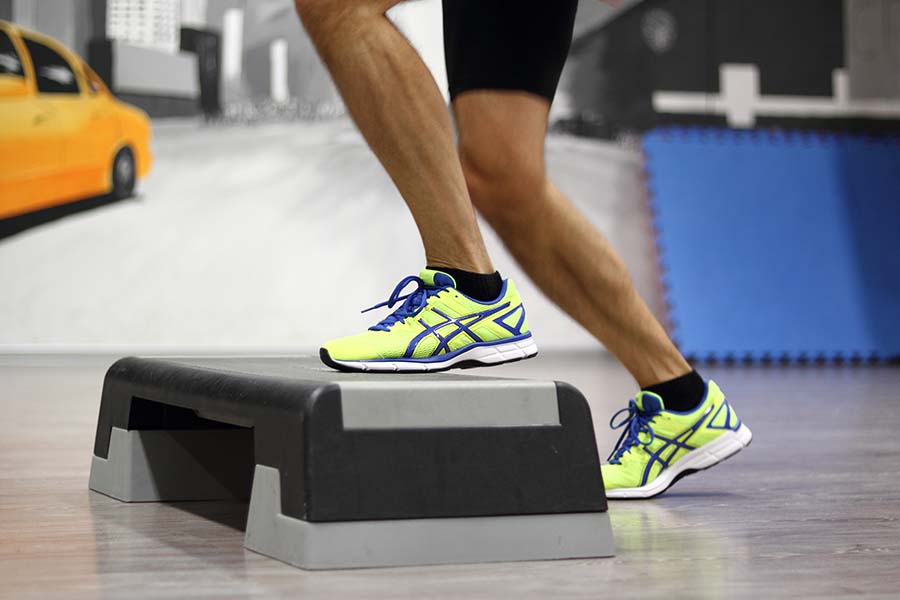
Step-ups are a functional compound exercise that targets the glutes, quads, and hamstrings. They are especially useful for building unilateral strength and improving stability in the hips and lower body.
Because step-ups focus on one leg at a time, they effectively activate the glute muscles and help improve symmetry, shape, and firmness around the hips. This makes them a great addition to any routine focused on minimizing butt dents.
How to Perform Step-Ups
- Stand in front of a sturdy bench or platform.
- Step up with one foot, keeping your knee in line with your toes.
- Push through your heel to bring your body upward.
- Step back down with control.
- Repeat the movement on the opposite leg.
- Perform 3 sets of 10–12 reps per leg.
Incorporating these exercises into your fitness routine can help strengthen and tone your gluteal muscles, reducing the appearance of butt dents and enhancing the overall shape of your hips and buttocks.
Start with lower weights and reps if you're new to these movements, and gradually increase intensity as your strength and form improve.
Additional Considerations
While exercise and diet play a major role in improving the appearance of butt dents, it’s important to recognize other factors that can influence your progress. Taking a balanced, informed approach will help you stay safe and make long-term improvements.
Keep the following considerations in mind as you work toward your goals:
- Consult with a Professional: If you’ve made consistent efforts through training and nutrition but still see minimal changes, consider speaking with a healthcare provider, such as a dermatologist or plastic surgeon. They can assess your situation and recommend clinical treatments if needed.
- Be Patient: Lasting change takes time. Stay committed to your routine, and give your body time to respond. Progress may be gradual, but consistency leads to results.
- Don’t Overtrain: While it’s important to stay active, pushing your body too hard can lead to injury. Make sure you perform exercises with proper form and allow adequate recovery time between workouts.
- Embrace Your Body: Everyone’s body is shaped differently, and hip structure varies naturally. Rather than focusing on flaws, appreciate the strength and progress your body is making through movement.
By keeping these points in mind, you’ll be better equipped to approach your fitness goals with both effectiveness and self-compassion, supporting not only a stronger body but a healthier mindset too.
FAQs
Can weight loss help reduce the appearance of butt dents?
In some cases, weight loss can reduce the appearance of butt dents, particularly if they are caused by excess fat in the hip area. However, lasting improvement comes from a balanced approach that includes healthy eating, regular exercise, and muscle strengthening—not just weight loss alone.
Can targeted exercises help reduce the appearance of butt dents?
Yes, performing targeted exercises that strengthen the glutes, hamstrings, and quads can help minimize the appearance of butt dents. Consistent training helps build muscle around the hips, improving shape and muscle tone.
How long does it take to see results from targeted exercises for butt dents?
Results vary based on factors like your current fitness level, workout consistency, and overall lifestyle. In most cases, noticeable improvements can take anywhere from a few weeks to a few months of regular training and proper nutrition.
Are there any risks associated with getting fillers or surgery to reduce the appearance of butt dents?
Yes, as with any cosmetic procedure, there are potential risks including infection, uneven results, or adverse reactions. It's essential to consult a qualified medical professional and carefully evaluate the pros and cons before considering fillers or surgery.
The Bottom Line
Butt dents are completely normal, but if you're looking to reduce their appearance, the right combination of strength training, posture correction, and consistency can make a visible difference. With targeted exercises and simple lifestyle adjustments, you can sculpt a stronger, more confident silhouette.
Stay patient and focused, real change takes time, but every workout brings you one step closer to your goal. Avoid comparing yourself to others and celebrate your personal progress along the way.
Stick to a balanced routine, fuel your body with nutritious food, and don’t hesitate to seek professional guidance if needed. Most importantly, embrace your journey and remember that confidence is built from strength inside and out.








